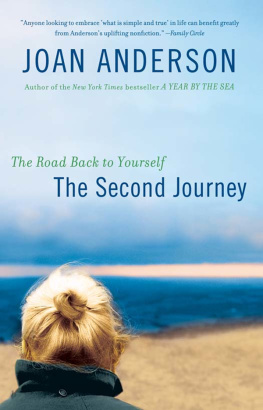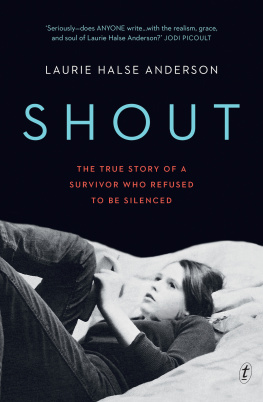This book is dedicated to all those who are searching for more, who crave understanding and yearn for support.
It is an offering of gratitude to each target of sexual harassment who is courageous enough to say something.
Foreword
W hen Kirsten Anderson first contacted me regarding a problem she was having at work, there was no way for either of us to know what kind of journey we would take together. As it turned out, the official legal journey took five years, a long time even by justice-system standards. By the time the legal journey finished, my relationship with Kirsten evolved from being her legal adviser to being a friend. In my role as legal adviser and trial Sherpa, my responsibilities ran the spectrum from communications coach and strategist to fashion assistant and cheerleader.
Every lawyer has a path to the profession. While my path to the law was accidental, I was lucky to find great mentors who showed me what a privilege it is to represent people who have suffered the kind of trauma Kirsten Anderson experienced. It is an honor to represent people through the kind of process she writes about in this book, but there is nothing routine about it. Cases like Kirstens just dont happen every day. Most lawyers arent lucky enough to work with a client like her or on a case with a set of facts carrying such societal significance. The lucky few who participate in such cases experience the practice of law on an entirely different plain. Rarely do they go to trial.
This book is not a litigation manual. It doesnt explain how to handle or survive cases like Kirstens. However, it does share what I was lucky enough to learn about Kirsten Anderson over the span of the lawsuit against the state of Iowa: a lawsuit should not define the lawyer or the person they represent, but it often clarifies exactly who they are, bringing out their best and worst qualities. That is precisely what happened in my brief time representing Kirsten.
I was lucky to represent Kirsten not because she listened to my advice, although she did do that, nor because she was a passive bystander in the process. I was lucky to have Kirsten as my client because she embodied my philosophy of life and litigation. People never call the trial lawyer because something wonderful has occurred in their life. They call us when something has happened or is happening to them, and they need help. So, when I talked to Kirsten from the first day until the very end of the lawsuit, my goal was to help her maintain her own sense of who she was and wanted to become. I reminded her often that the litigation could supply a sense of justice, but it could not produce a certain and fair sense of justice. She had to take full responsibility for her life, litigation or not.
That is who she was the first day she wandered into my office and that is who she is today: a bright and curious wife, mother, and daughter. Though the lawsuit and trial that Kirsten writes about in this book did not define her, they did help clarify those qualities. The legal process surely tested those qualities many times, but Kirsten was resolute and ready for whatever result would come.
Lawyers love to tell war stories, tales of heroism and courage in the heat of battle. Funny, those stories always seem to revolve around their own accomplishments. Those are not the interesting stories. The stories I want to hear are like the one you will read in these pages. The nuts and bolts of what happened and how we did it are more interesting coming from the person caught in the eye of the storm. More important than the tales of the process is what we can learn from a person who walked through it, keeping her sense of self and sense of humor along the way. In that sense, this book is for survivors and even those who know, love, and represent them. For it is one thing to espouse a philosophy of life and litigation; it is quite another to actually capture it, live it, and accomplish it.
Thanks, Kirsten for your perseverance, your dedication, for your faith in me, and for continuing to be a bright light to show others the way.
Michael Carroll, March 21, 2021
Introduction
For Those Who Feel Lost
Its the 21 st Century, yet we are still bemoaning the fact that people are being sexually harassed, bullied, and retaliated against at work. Change is long overdue.
A s you read these words, someone is suffering persecution. 81 percent of females and 43 percent of males have been sexually harassed in their lifetimes. Its affecting their lives and livelihoods. Its paralyzing them. And its a pervasive problem everyone should care about.
The statistics surprise most people. I hope it angers them, too. It angers me! The global workforce employs way too many jerks with little to no regard for anyone else. They use their positions of power and authority to demean others for personal entertainment or benefit. They compromise workplace integrity, reputation, and financial stability. It isnt right.
The stats referenced81 percent and 43 percentare also downright sad and frustrating. Clearly this issue affects everyone directly or indirectly. Unfortunately, most people dont identify sexual harassment, bullying, and retaliation for what it is. They dont understand how such aggression impacts their lives and their ability to contribute to the workplace or the world at large.
I know how damaging these kinds of behaviors can be because Ive experienced them. I was once a scared, confused target of sexual harassment and verbal abuse who simply couldnt get over the fact that my coworker and bosses would do and say inappropriate things to a nice girl like me. I shrugged it off, laughed, and even fired back, thinking I needed to prove myself to fit into a male-dominated, locker room-like atmosphere.
My strategic attempts to better fit in and make it stop didnt work. They never do. The harassment I experienced eventually escalated to the point of no return. Everyone in the office knew the environment was damaged. They were afraid to say anything because they knew management would do nothing. They were tired of not being heard, so they gave up.
My story isnt unique. This problem is hiding in plain sight. It lurks in downward glances, whispers, and gossip. It hangs around water coolers, locker rooms, and board rooms. It creeps into comments that make you blush or feel uncomfortable, yet if the aggression isnt directed toward you, you feel it isnt your problem.
Im here to tell you that it very much is your problem. Its everyones problem. Do not look the other way. Do not walk away, and do not say nothing. If you want safe, healthy, productive workplaces, its time to step up and invest in yourself and those around you. You can do it. The concepts in this book show you how. They arent radical, nor are they complex, but they will challenge you to adjust your perspective.
We live in an imperfect world hell-bent on perfection, yet stuck on status quo. Our TV shows portray a societal ideal that is hardly realistic. Cultural imagery projects perfection in all sorts of ways. Magazine covers are littered with airbrushed models whose flawless bodies dont reflect the average human form. Social media influencers show only a tiny peek into their livesjust what they want us to see. The effortless photograph really took hours to set up and touch up. Its imagery management and its all fakequite the opposite of perfect.
Even the regulations our countrys workplaces abide by are far from perfect. When it comes to labor and employment, federal laws are interpreted broadly. There is little uniformity from state to state, which means keeping track of labor and employment laws regarding workplace harassment is a job in and of itself. Many state laws are vague, difficult to interpret, and behind the times. They are reactionary at best.
















